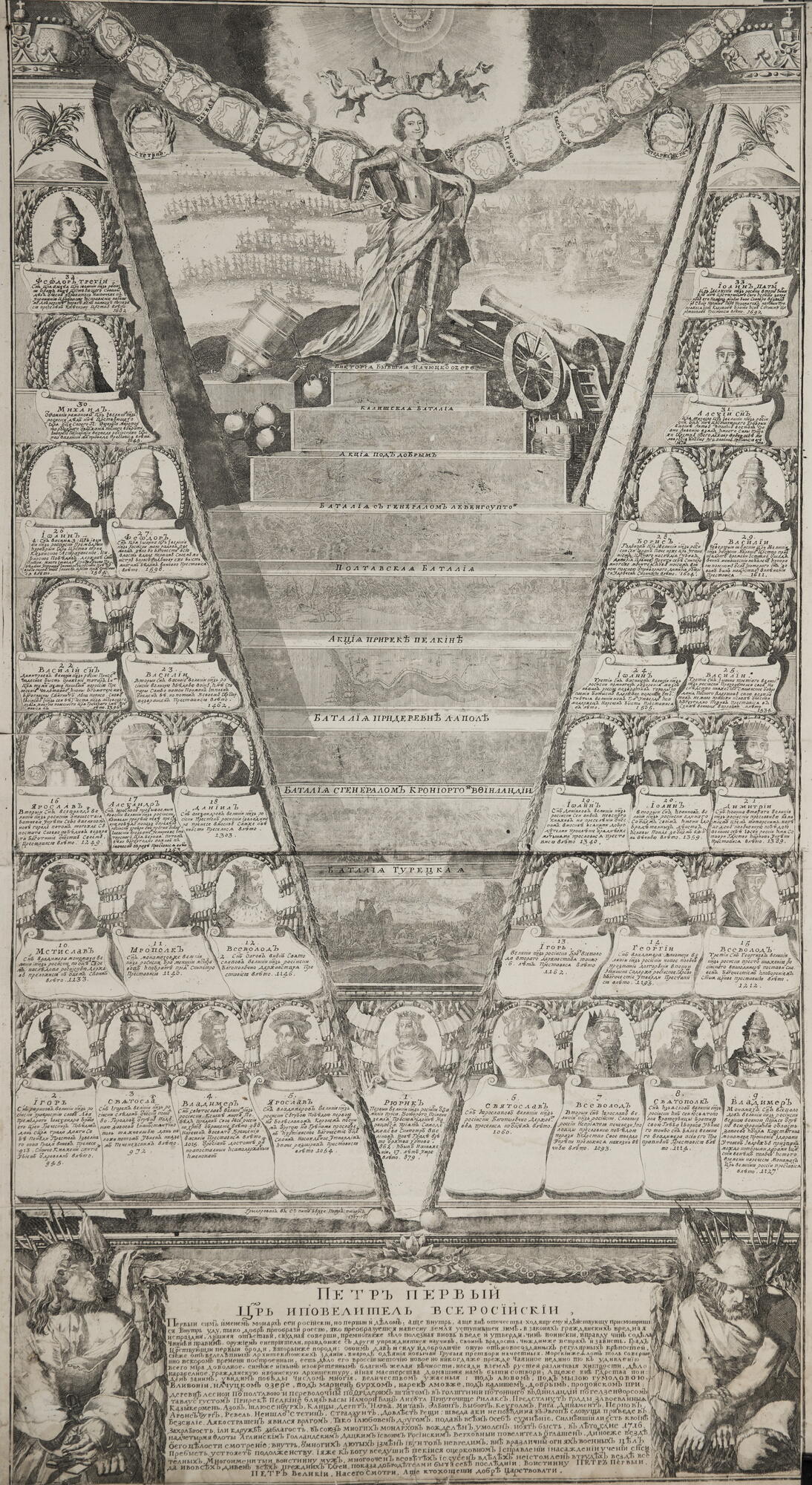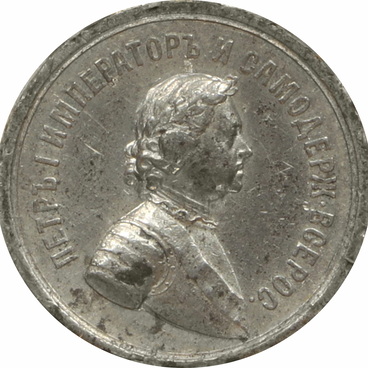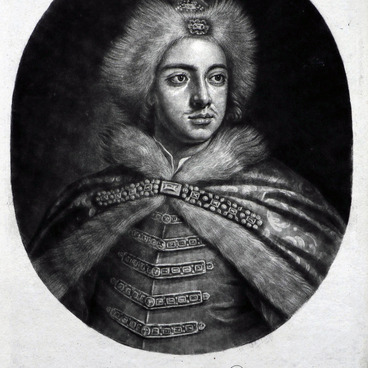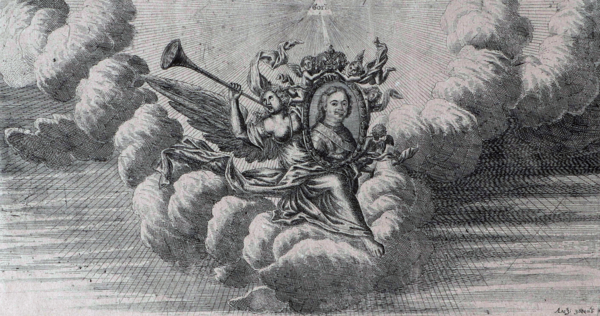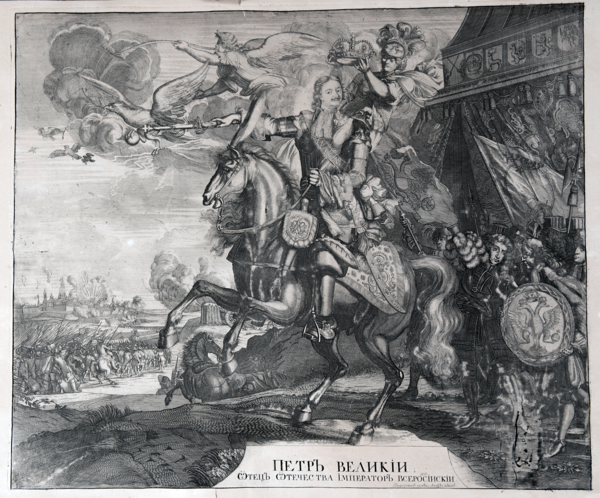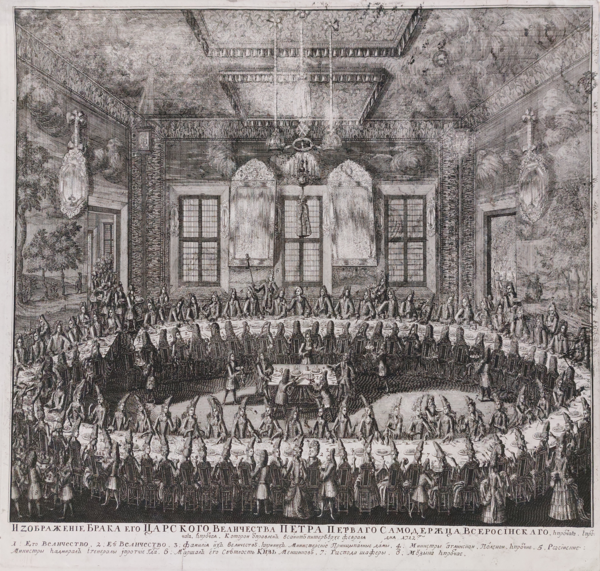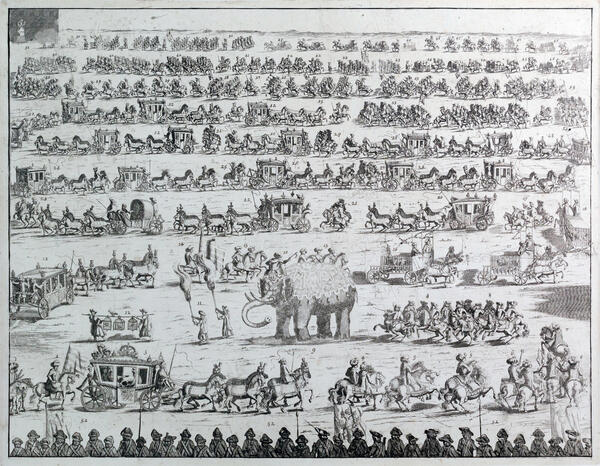In 1716–1717, Peter I took a long trip abroad to Western European countries, where he met with foreign officials, visited sights and attained foreign experience in economy, sciences and culture.
In late March — early April 1717, Prince Alexander Menshikov sent Peter I a sheet with the tsar’s genealogical tree for approval, so he could make necessary adjustments.
The man behind this idea, as well as the author of the text, was the Russian spiritual figure and publicist Theophan Prokopovich. The engraving was made by the renowned Dutch engraver Pieter Pickaert, a student of Adriaan Schoonebeek, who later became head of the engraving workshop at the Armory Chamber, and Alexey Zubov, a talented Russian engraver and Pickaert’s student.
Pickaert divided the composition into three triangles. The central, downward-facing peak forms a kind of pedestal, which is crowned by the figure of Peter. The tsar is represented standing on top of the stepped pedestal, in the center of a naval battle. He is shown surrounded by military paraphernalia with two putti above him, placing the crown on his head. The pedestal is decorated with images of battles and battle plans; behind Peter is a chain made of plans of conquered fortresses.
The two triangles on the sides contain 33 medallions with portraits of princes and tsars that came before Peter, starting with Rurik. In total, the sheet covers the period from the 9th century to 1682 — the year Peter I was crowned. Each medallion is accompanied by a brief historical summary.
The process by which the engraving was made is called etching. The name of this technique comes from the French word eau-forte , which means “strong vodka”, as it was customary to call nitric acid.
The metal plate for the future etching was covered with a waxy acid-resistant ground. Then the design with all the details was scratched onto the plate with a needle and immersed in a container with the eau-forte solution. Etching happened in areas not covered with the ground. To achieve a clearer and deeper pattern, after the first etching, the plate was washed, dried, and then the procedure was repeated several times until the design got the required look. When this was complete, the master removed the ground with kerosene, and applied paint to the finished printing plate.
The engraving “Apotheosis of Military Glory” was presented to Peter I in 1717, upon his return from Western Europe.